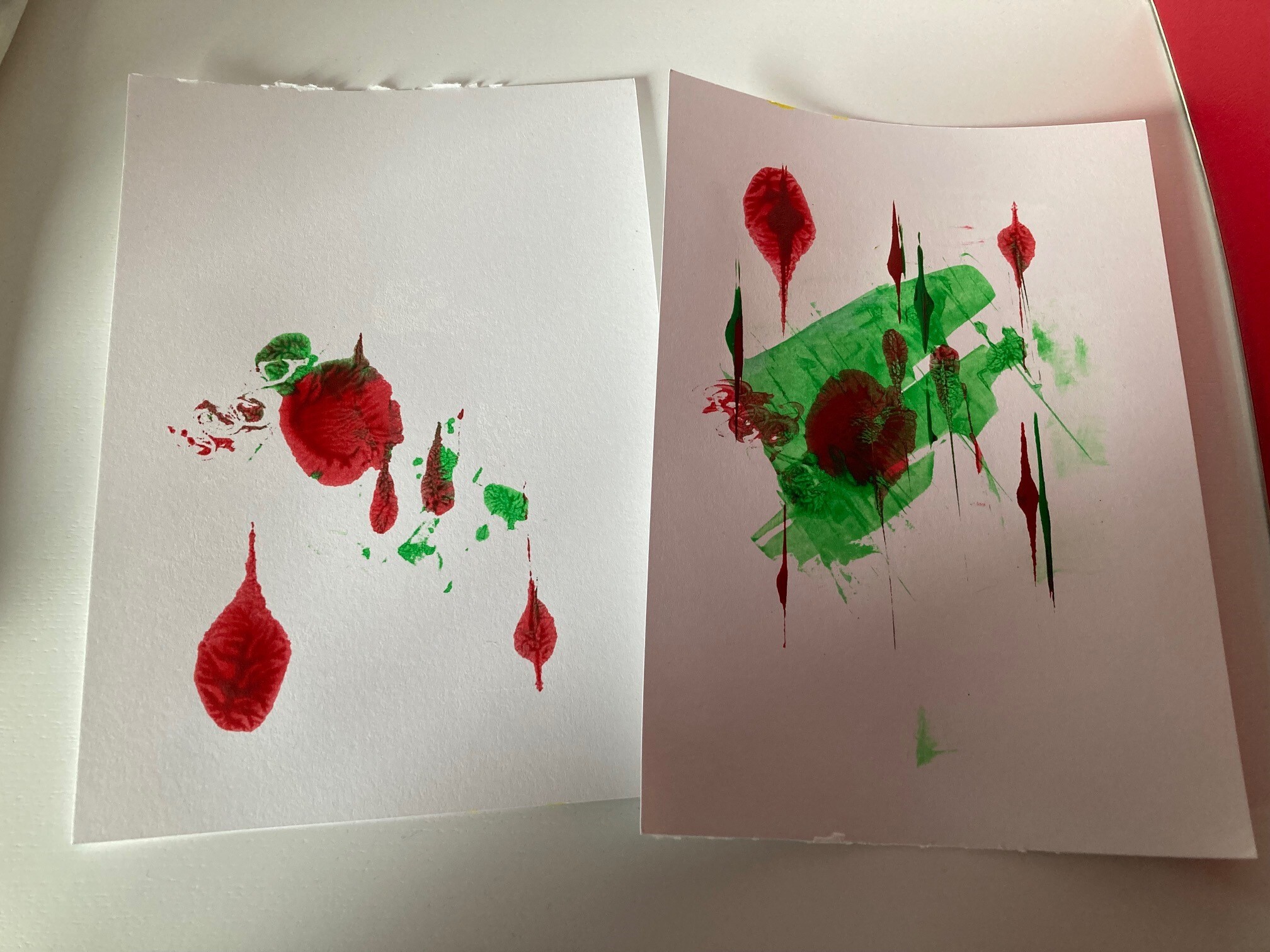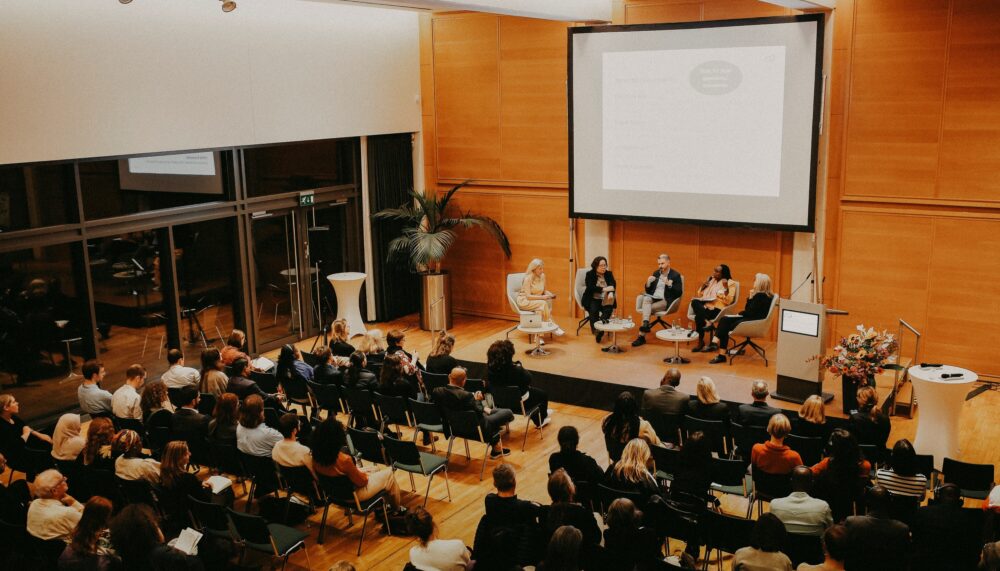FEATURE | 28 Dec 2022
Transformation through art
A talk between artists and peacebuilders

Inspired by a recent artist residency, Berghof colleagues discuss with painter Lynne Cameron how art creates space for conflict transformation.
Lynne Cameron, a contemporary painter interested in empathy and conflict transformation, spent several weeks at the Berghof Foundation as artist-in-residence in 2022. She invited our staff to creative exchanges and practical art-making sessions. This sparked a discussion on how art can contribute to transforming violent conflicts into peace. Several Berghof colleagues and Lynne came together to speak about how both areas can benefit from each other.
Maja Leo: We are grateful for the exchange over the last weeks and the painting you gifted us. Could you tell us about this painting and how this relates to your artist residency at Berghof?
Lynne Cameron: For most of the residency, I have been making so-called “found poems”. I looked for inspiration in texts about the work of the Berghof Foundation in the anniversary publication and slowly transformed the emerging poems into paintings. I invited colleagues at Berghof to do the same, which led to a fruitful and exciting exchange. The title of the painting I have given to Berghof Without losing ourselves also comes from that publication. It started as an abstract painting but over time, and after several layers, some figures emerged. I paint intuitively and when you paint this way, it is always this kind of dance or conversation between intuition and control.
Mir Mubashir: In one of your studio interludes, Lynne, as we doodled with colours and shapes, you were speaking about “the tensions of different ideas” and “listening to the whispers”. I was in the middle of writing a research report, which was proving to be an uninspiring ordeal. This was the perfect creative interlude that I needed to make me more aware of the tensions and the whispers, which eventually helped me rewrite the report with more vigour.
Lynne: And that is something we were able to discuss during the residency. We spent quite a lot of time talking about what I call “the imaginal space”. When you have lots of ideas, it is important to allow for creative tension and to examine all the possibilities and to mentally try them out. This is important in my case before I actually add a face on the canvas or, perhaps, in the case of peacebuilders, before inviting different actors to a dialogue and planning the setting.
Beatrix Austin: Sometimes art can be incredibly helpful to convey states of being that cannot be described in words. When you sculpt or paint, then you have expressed almost the same thing, but at a deeper level of meaning that will allow you to see things differently. It would help our work to use art to express our ideas, to illustrate our writing or to accompany dialogues.
Maja: There are so many different ways of doing art, not only painting, also photography, music or theatre. Mir, would you like to share a bit on your experiences with performative practices for social change?
Mir: Some of our colleagues have used interactive theatre in Jordan and also in their work within Germany. It is largely based on Augusto Boal’s approach of using theatre as a “rehearsal for revolution”. One such format is creating a fictional play to illustrate a social problem or conflict, built on real stories of people, which you then perform and invite the spectators to intervene with their ideas as a means of “rehearsing” social change. In my experience of working with peacebuilders in different contexts, such performative methods have real impact on their work.
From my experience with art, I believe that our creativity – as individuals and as an organisation – is nourished by what gives us joy and meaning.
Lynne Cameron, painter
Maja: There are many qualities in performative practices that could also be beneficial for conflict transformation. Trying out a new role, changing perspectives and practicing empathy with each other. Those are also key aspects of conflict transformation. I am wondering how we could transfer this from the level of community work to more formal dialogue and mediation settings.
Beatrix: In a way the negotiating tables of what we call Track 1, which is the highest diplomatic level, are such highly choreographed events. They are bits of theatre in and of themselves. Maybe if one started playing a little bit with that we would become aware of how much we as facilitators actually have influence setting the stage. Space has an incredible influence on us as human beings, on how we interact, what can be said and how comfortable we feel. And I think that is something that can unlock that space for conflict transformation.
Lynne: I am certain you will be successful in this endeavour. If I may add this at the end, I strongly believe, from my experience with art, that our creativity – as individuals and as an organisation – is nourished by what gives us joy and meaning. The title of my painting is referring to that. I am grateful to have sparked some of that during the residency at Berghof.
This article is a shortened and edited version of a talk that took place in 2022. The talk was facilitated by Maja Leo and included Berghof colleagues Beatrix Austin and Mir Mubashir as well as painter Lynne Cameron. Read more about the residency on Lynne’s blog where she shares further reflections after returning to the UK.
Media contact
You can reach the press team at:
+49 (0) 177 7052758
email hidden; JavaScript is required











